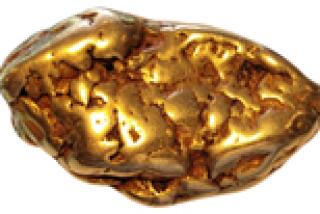Personal Research Helps in Establishing Value
- Share via
Question: Our parents, now gone, lived in Europe for 10 years. During this period, 20 years ago, and on many previous trips they purchased gold coins. My mother had them made into a very elaborate necklace hanging from gold links with some diamonds--the story of the Bible in gold coins. She also had many bracelets with coins from Italy, Spain, Switzerland, Germany--a huge Pope Pius coin and many larger than half-dollar sizes worn on long chains.
We do not know how to go about selling these things to realize the most that we can. Could you please give us guidelines? --J.B.G. and M.B.S.
Answer: Coins make beautiful jewelry. As a rule, lower grade or common-date coins are used. The reason is that it’s easy to scratch or damage a coin if it is carelessly handled, and any blemish will lower its numismatic value. Occasionally, however, a valuable piece will unwittingly be used in jewelry and it still may be worth more than bullion value.
So, how do you know what your coins are worth?
The simple way is to visit one or more coin dealers and ask them to appraise your coins for the purpose of selling them. But you might be able to do better if you have some idea what your coins are worth before you see the dealer.
To do this, list each of your coins by country and denomination. Then, get a current world gold coin catalogue (there are many available) and price each coin individually. Keep in mind that catalogues only approximate the value, and you can reasonably expect only about half the catalogue value. But at least you will have a price guideline.
As for catalogues, you might be able to find what you want at the public library or a used-book store. As I indicated, many are available. The Standard Catalogue of World Coins by Krause and Mishler will probably serve your purpose. Another good one is the Simon & Schuster World Coin Catalogue by Gunter Schon. There are also some books devoted exclusively to world gold coins and some that concentrate on just one country.
It all depends on how much effort you want to put into selling your coins and how much you want to maximize the results.
Q: I have three pieces of silver coins--1886, 1921 and 1925. May I know if these coins command a price? Where can I have these coins changed?--T.M.G.
A: I can only guess that your silver coins are dollars. If so, they are worth about $6 to $8 each if they are circulated. Uncirculated silver dollars are worth more. Coin dealers will offer you a price for them. You don’t have to accept the first offer, and prices may vary from dealer to dealer. It pays to shop.
Q: Would you be good enough to tell me what these coins are worth today? I have two brand-new silver dollars dated 1884. They are enclosed in plastic cases.--A.R.
A: Sight unseen, your coins are probably worth about $25 each. But that is only a guess. Your coins must be seen for an accurate appraisal. Show them to several dealers to get a more realistic opinion.
Q: Please help this 86-year-old lady. Would you be good enough to estimate the value of the following: 1914 and 1927 Lincoln commemorative gold coins; a 1909 $5 Indian and 1910 $2.50 Indian; a second restrike of the 1861 silver Confederate cent from the original engraving by Robert Lovett; a copy of a 1860 French coin, which was split and small knives inserted; and two quarters, 1853 and 1857.--J.B.C.
A: I don’t know about your first two coins, described as gold Lincoln commemoratives. They’ll have to be seen to be identified and priced. However, you’ve hit the jackpot with your Confederate cent. It’s worth $3,500 and up. The French coin also is a puzzle, perhaps a novelty piece of undetermined value. The 1909 $5 gold piece is worth $200 and up, the 1910 gold $2.50 is $150 and up. The silver quarters are $5 each and up, depending on condition.
Coin News
The last of a 12-coin series from Jersey is now available from the British Royal Mint. The series represents the Island of Jersey’s 12 parishes in descending order of population. The 12th coin (pictured) salutes the Parish of St. Mary, located on Jersey’s northern coast. Mintages are limited to 250 in 22-karat gold and 2,500 in .925 sterling silver. Gold proof coins are $525; silver proofs are $34.95 from the British Royal Mint, P.O. Box 2570, Woodside, N.Y. 11377-9864.
A three-day course in coin grading is being offered by the School of Numismatics, affiliated with the American Numismatic Assn. The course is being held in conjunction with the Long Beach Numismatic Philatelic Exposition Jan. 30-Feb. 1 at the Hyatt Regency in Long Beach. Mary Sauvain, an authenticator/grader, is the instructor with Ron Gillio, a professional numismatist. Seminar fees are $400 for ANA members, $450 for non-members. To register, call (800) 367-9723.
Elizabeth Jones, chief engraver of the United States Mint, will be guest speaker at the Long Beach Coin Expo at the Long Beach Convention Center Feb. 3 at 9 a.m. Other meetings that day: the Civil War Token Society at noon; a seminar on the Professional Coin Grading Service at 1 p.m.; and a National Silver Dollar Round Table Forum at 4 p.m. While this is going on, the baseball card section will have autographs signed by Bob Lemon from 11 a.m. to 2 p.m. and Ralph Kiner from 3 to 6 p.m. Expo events the day before (Feb. 2) include Don Drysdale signing autographs at the baseball card section from 3 to 6 p.m. and a meeting of the Early American Copper Society at 7:30 p.m.


